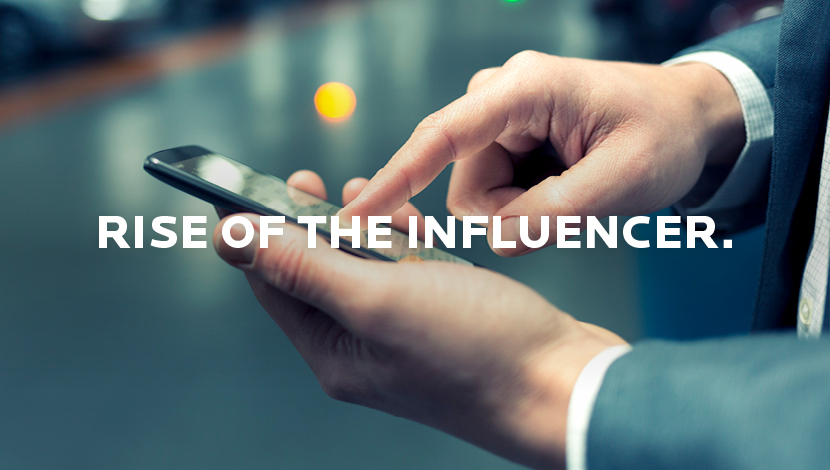
Rise of the influencer
By now we’re all familiar with some form of these posts in our social media feeds – one of your favorite celebrities used a new product, discovered a new brand of clothing or cosmetic or started using a new service, and they are so excited to tell us about it! Less obvious but still prevalent are posts from people we follow encouraging us to attend an event or support (or oppose) an issue or cause. These types of posts all have one common end-goal – to influence you to purchase a product, take a stance or raise your awareness.

The prominence of social media in our everyday lives combined with social media companies’ efforts to monetize their platforms has made paid “influencer marketing” all the rage, but the concept of using influencers to advance a brand or agenda isn’t new. As relationship builders, public relations professionals regularly engage with influencers to spread their client’s story and build awareness among a targeted audience. Influencers and PR are like peanut butter and jelly. But as the media and communications landscape shifts, so do the ways in which we engage with influencers.

Social media has reshaped the way people receive and share information. A press conference and a news release may once have been a perfectly acceptable and successful form of connecting with media and getting the word out, but the days of the masses sitting down to dinner with the 6 o’clock news are over, and so is the concept that mass awareness can be earned through traditional outreach only.
To be effective, PR must take an integrated approach, incorporating concepts of traditional media outreach with digital outreach directly to audiences through social media, blogs, email and other non-traditional tactics. Digital outreach can be carried out directly by the company/client/organization, indirectly by influencers, or through a combined effort that includes direct company-to-audience and influencer communications.
Who’s an influencer?

Influencers can include members of the media, community leaders, subject matter experts, celebrities or anyone determined to have an influential voice in the matter.
There is a lot of talk in the marketing world about the value of “micro-influencers,” loosely defined as people with 10,000-100,000 followers on their social media account. For a national brand or issue, 10,000 followers may be considered “micro,” but if your project is very localized, a person in the community who has 1,000 or fewer followers may be far more effective in raising awareness than a celebrity or known social media influencer with lots of followers but few in your target audience.
The Federal Trade Commission has developed guidelines for social media endorsements which can help identify when disclosures should be used, and how to make disclosures on various platforms. In general, if someone is being compensated for their endorsement, it should be disclosed.
Does it work? It depends.
Successful engagement with influencers as part of public relations often occurs through a shared desire to raise awareness without paying the influencer to participate. This differs slightly from influencer marketing, which typically includes monetary compensation for influencers. There are pros and cons to both.
Studies have shown that opinions and suggestions on social media can effectively influence people to make buying decisions; however, audiences are more skeptical if they know the influencer has been paid. Earned mentions may carry more value, but they are also not guaranteed, not as easily controlled and can require a longer process to attain. The paid influencer approach is a sure thing in terms of mentions, message and speed to market, but messages are less likely to spread organically.

Let’s be honest. There is no sure thing. Any time you put your brand or message in the hands of a third party, i.e., influencers, there are risks, including:
- Watch out for “experts” with no proven background in the subject matter.
- Credibility risks. Avoid trolls and obvious endorsement seekers.
- Irrelevant influence. Research to ensure you choose influencers who are active on the social media channels used by your audiences.
Influencer plans require plenty of research and time to fully develop and should be used in combination with other tactics. Influencer relations also require a defined budget. Know what your plan is and how much budget you have available before approaching potential influencers.
No two projects or clients are the same, and there are more methods of communicating available now than ever. That’s why we work with each client to determine specific audiences, goals and how best to reach them before putting together a tailored integrated plan using the most appropriate channels.
Want assistance in social media management for your company? Reach out to us!
